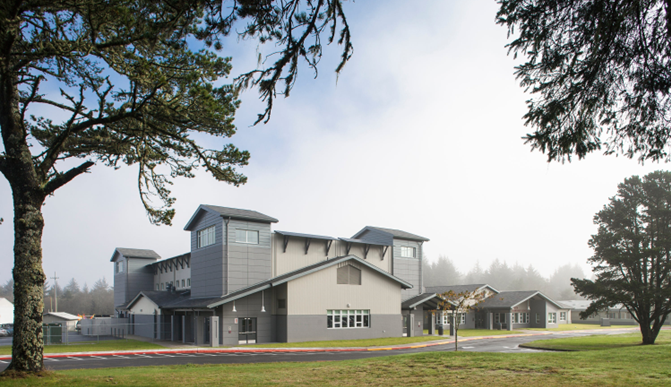- All Posts
- Winona State University Becomes One of the Most Energy-Efficient Universities in Minnesota
Winona State University Becomes One of the Most Energy-Efficient Universities in Minnesota
The Leading Energy Savings and Sustainability project features six campus-wide solar installations delivering a 25% reduction in carbon emissions.
WINONA, Minn. (October 25, 2022) –Local leaders, campus staff, faculty and students gathered today at a ribbon cutting in front of the Integrated Wellness Complex to mark the completion of the $12 million campus-wide sustainability and solar energy project. Nestled on an island along the Mississippi River, Winona State University (WSU) is a comprehensive regional public university with a sister campus in Rochester, Minn.
Using the newly constructed solar car ports as a backdrop, guests gathered to hear from local leaders and campus teams about the Leading Energy Savings and Sustainability (LESS) Initiative – a 1.4 MW solar project generating almost 1.7 MWh of renewable energy each year. It is the largest energy performance contract project in the Minnesota State University System and will result in annual guaranteed utility and operational cost savings of approximately $685,000—a 23.8% reduction in utility costs and a total savings of $26 million over the project’s 25-year lifetime.
In addition to the four solar carports in the Integrated Wellness Center parking lot, a key feature of the project is six rooftop solar photovoltaic (PV) arrays installed at Haake Hall, Helble Hall, Kirkland Hall, McCown Gym, Wabasha Recreation Center and the Integrated Wellness Complex itself. The on-site solar PV will provide between 10% and 12% of WSU’s annual electricity consumption while reducing CO2 emissions by 9,670,000 pounds, which is equivalent to driving the average passenger vehicle more than 11 million miles.
The project is part of a broader comprehensive sustainability and solar initiative for Winona State. The LESS project also includes campus-wide lighting upgrades in all buildings and parking lots, central plant backup generator upgrades, installation of destratification fans to equalize interior temperatures, enhanced water conservation equipment (including irrigation and swimming pool controls) and more. All told, the project replaced 21,000 light fixtures, as well as every toilet, shower head, urinal and faucet aerator on campus, leading to a huge reduction in electricity consumption (nearly 5 million kWh per year), natural gas consumption (over 225,800 Therms each year), and water consumption (almost 10 million gallons of water per year).
“We’ve been excited to partner with McKinstry on this sustainability and solar energy project to reduce WSU’s environmental impact while dramatically improving campus energy and water efficiency,” said Nathan Engstrom, WSU’s Campus Sustainability and Planning Director and LESS Project Manager. “This initiative will remove $7.5 million of deferred maintenance from the university’s backlog, allowing us to reduce maintenance expenditures, modernize and improve facilities, increase comfort and aesthetics, and – most importantly – improve the educational experience for our students, faculty, and staff.”
The project and ribbon cutting were featured by local ABC news affiliate News 19: WSU leads the Minnesota State System in energy efficiency
To learn more about the project, visit:LESS – Winona State University
Explore Other News

Small Coastal School District Implements Onsite Microgrid
Grays Harbor County, Wash. (April 18, 2024) — Western Washington rural K-12 school district, Ocosta, is partnering wi…

McKinstry Releases 2023 Social Impact Report
SEATTLE, WA — McKinstry today released its 2023 Social Impact Report, highlighting its work to create greater equity …

International Women’s Day 2024
Each year on March 8, International Women’s Day is globally celebrated to recognize and uplift the social, economic, …